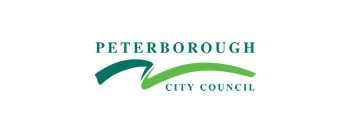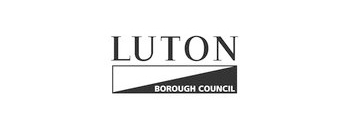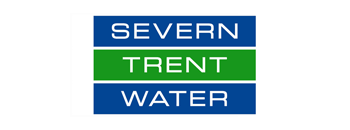Ask Craig
Craig, our Senior Drainage Engineer, is the longest standing member of the Sustainable Drainage Team with over 20 years’ experience at Peterborough City Council.
Below we’ve put together some frequently asked questions that Craig often receives. If there is a question that you would like answering that is not covered on this website, please Contact Us.

Frequently Asked Questions
1 Why use SuDS?
2 Do SuDS take up much space?
3 Can SuDS be used in areas which have little or no infiltration?
4 Can SuDS be used in Schools?
5 What about health and safety?
6 Where can I find out more about design and construction?
7 What works in Peterborough?
8 Can SuDS be used in brownfield or contaminated sites?
9 Will SuDS make public space unusable?
10 How do SuDS help prevent flooding elsewhere?
11 What happens when the systems are full or fail?
12 Are SuDS always green?
13 Who will look after new SuDS?
14 How do SuDS deliver benefits for the community and environment?
A: SuDS (sustainable drainage systems) provide an approach to mimic, as closely as possible, the natural drainage from a site before development, they provide flexibility within a site to manage flood risk and treat runoff to remove pollutants.
Adopting a holistic approach towards surface water drainage provides the benefits of combined water quality and quantity control, increased amenity and biodiversity value as well as a range of other benefits. This is accomplished by managing the increased flows and pollution from surface water runoff that arise from development.
For further information take a look at our What Are SuDS? page.
[Return to Top]
A: There is sometimes a perception that using the SuDS approach will need more space on site which can be a challenge for higher density developments. With creativity and careful planning this can be easily overcome and great places and spaces can be delivered (see the Riverside Place case study).
For new developments there may be a planning requirement to incorporate public open space and car parking, providing an ideal opportunity to simultaneously integrate SuDS and offer multifunctional benefits. When planning sustainable drainage in high density developments both innovative design and specific SuDS components are fundamental to success, and can include a range of soft and hard components depending on the opportunities and constraints of a site.
[Return to Top]
3 Can SuDS be used in areas which have little or no infiltration?
A: Although many SuDS components use infiltration, there are sites where infiltration is not possible, due to impermeable ground conditions, contamination or a high water table. This does not prevent the use of the SuDS, but requires some thought to be given to how water can be treated to improve quality and attenuated to reduce peak flows.
Rainwater harvesting, green roofs, permeable surfaces, swales, ponds and wetlands can all operate without infiltration. Permeable surfaces, used for car parks and drives are very effective, even where infiltration is not possible.
[Return to Top]
4 Can SuDS be used in schools?
A: Yes, schools are fantastic places for SuDS, they provide schools with a range of water and wetland related learning opportunities that enables children to play an active role in the stewardship of their local environment. The Pymmes Brook SuDS for School Project in North London is a great example of how SuDS can work in schools.
[Return to Top]
5 What about health and safety?
A: There are many ways to reduce the chances of accidents in and around sustainable drainage schemes. With appropriate design these risks can be minimised particularly if components are visible and successfully integrated into the public realm. It is recommended that open water components incorporate barrier planting (usually densely planted marginal vegetation and/or thorny plants to restrict access) and gently inclined side slopes.
Options include the design of banks for ponds and swales with a maximum of a 1 in 3 slope and the depths of ponds and wetlands should be kept to a minimum, with the maximum depth of water being located away from the edges. Often, information signs are used demonstrating the benefits of sustainable drainage. Educating the public how the SuDS scheme works and the potential risks is a vital part of involving the community.
For more information download the Health and safety framework.
[Return to Top]
6 Where can I find out more about design and construction?
A: There are a number of recognised industry standards for delivering SuDS which are freely available online, please visit our Delivering SuDS page to access some of these resources. You can also Contact Us for further assistance.
[Return to Top]
A: Peterborough has varied geological conditions which allow the whole spectrum of SuDS solutions, examples can already been seen throughout the area including; permeable paving, ponds, wetlands, swales and detention basins. The less permeable soils and urban redevelopment areas which have a risk of ground contamination will mean that some sites have less capacity to infiltrate water into the ground than others. Sites in the west of the Peterborough area may find that the infiltration potential is so good that no positive outfall is required. Within the city it has even been found that the ability to infiltrate varies from one end of the site to the other, making the planning for the most cost effective drainage solution very important.
Our SuDS in Peterborough page talks about this in more detail.
[Return to Top]
8 Can SuDS be used in brownfield or contaminated sites?
A: Whilst it is important to get as much water back into the ground as possible there will be sites which, due to previous site activity or the planned future use, require certain measures to protect sensitive ground waters or prevent the spread of contaminants. SuDS techniques can still be applied on these sites provided the appropriate steps are taken. The application of the SuDS philosophy on such a site also helps to ensure that the surface water runoff quality is improved before being discharged. There are good examples of water quality management on higher risks sites on the susdrain website.
The application of the treatment train (set out in the SuDS manual) can help to manage water quality by filtering out sediments and contaminants and preventing a concentrated discharge of polluted waters from large areas of hard standing such as car parks.
[Return to Top]
9 Will SuDS make public space unusable?
A: Certain SuDS components such as detention basins that also act as play areas are designed to hold water back in extreme weather events this raises concerns about these areas being boggy and unusable during wet periods or throughout the winter. It is important to remember that these features can be designed to receive only rainfall in extraordinary circumstances and will function like any other open space area during normal rainfall.
In Peterborough and the surrounding countryside much of the landscape has traditionally been drained using dykes and ditches, this makes the land usable for activities such as agriculture. In certain areas high water tables or low permeability of the soils will mean that the drainage of any vegetated open space will need to be considered if it is to remain usable as has traditionally been the case.
[Return to Top]
10 How do SuDS help prevent flooding elsewhere?
A: In a natural landscape water is allowed to puddle over uneven ground, drain through the soil and move slowly across the surface (see susdrain’s ‘Ever wondered where the rain goes?’ video). This natural process is then replaced by large areas of hard standing which drain more efficiently, preventing both infiltration and evaporation which sends the water downstream at a faster rate and in greater volume, this can lead to flooding in heavy rainfall or snow melt. Mimicking the natural environment means slowing down water across a catchment, whilst maximising the potential for infiltration and evaporation, this in turn reduces the impact a development has on the flood risk for others.
In a city environment many of the existing drainage systems were not built to the standards required today and in some cases still drain through combined sewers which also carry waste water. To ensure that the city is able to manage additional development, redevelopment and climate change it is important that opportunities are taken, where possible, to allow extra space for water and make the city more resilient against extreme weather events.
[Return to Top]
11 What happens when the systems are full or fail?
A: Like any drainage system SuDS have the potential to be overwhelmed if the rainfall event exceeds the design standard for the drainage system or the system is poorly maintained. The philosophy behind SuDS, unlike traditional systems, means that these exceedance events are considered during the design process, more space is made for the additional water and the flow of water at this time should be kept away from property as much as possible. As such whilst there is always a risk that nature will be more extreme than we expect it to be, SuDS will help us be more resilient to these extremes and sites around the country fared well during storms over recent years.
[Return to Top]
A: We encourage the introduction of planting into the urban environment as this provides a vital opportunity to introduce amenity and biodiversity into the landscape. It can also filter runoff and act as a treatment stage for the surface water whilst providing an open asset which is easy to inspect in future. On occasion the type of componentsused in the drainage system will need to be appropriate to the setting and context of the development.
[Return to Top]
13 Who will look after new SuDS?
A: The council has been anticipating this new responsibility since the creation of the Flood and Water Management Act 2010, the key to the sustainability of any drainage system is that it receives an appropriate maintenance regime. Whilst the council look forward to the opportunity to manage flood risk, as it stands, each site is managed separately and the long term maintenance of the assets needs to be thought through at the design stage to avoid the creation of assets which cannot be adopted by an enduring body.
[Return to Top]
14 How do SuDS deliver benefits for the community and environment?
A: Aside from the obvious drainage and flood risk benefits SuDS can be used to provide additional benefits which are often quoted as being water quality, biodiversity and amenity:
Water quality – by the nature of development the increase in human activity such as traffic, leads to an increase in contaminants being deposited. The loss in vegetation also reduces the interception of airbourne pollutants deposited, meaning that on a day to day basis more contaminated water is reaching the watercourses and rivers around the city. Introducing the method of source control to sites can help to minimise the impact of developments and ensure that they are not detrimental to the surrounding environment. Traditional road gullies and petrol interceptors can help to extract some of the sediments and pollutants from the urban runoff but many of these pollutants become dissolved or suspended in the water and washed in the aquatic environment. Filtering runoffthrough vegetation or SuDS components (such as permeable paving) can help to minimise this impact.
Biodiversity – Improving the quality of the runoff reduces the impact on existing biodiversity in the receiving environment but aside from this, the creation of new planted and open water features can increase the potential habitat. The type of habitat that is created should be specific to the location, see the Cambridgeshire and Peterborough Biodiversity Action Plan.
Amenity – Creating assets with dual functionality such as parking areas and recreational open space that can store water above or below ground help to ensure that the space used for managing surface water is used in the most efficient manner. Creating a more attractive landscaped site with open water features can also create a more pleasant and desirable place to live.
[Return to Top]















